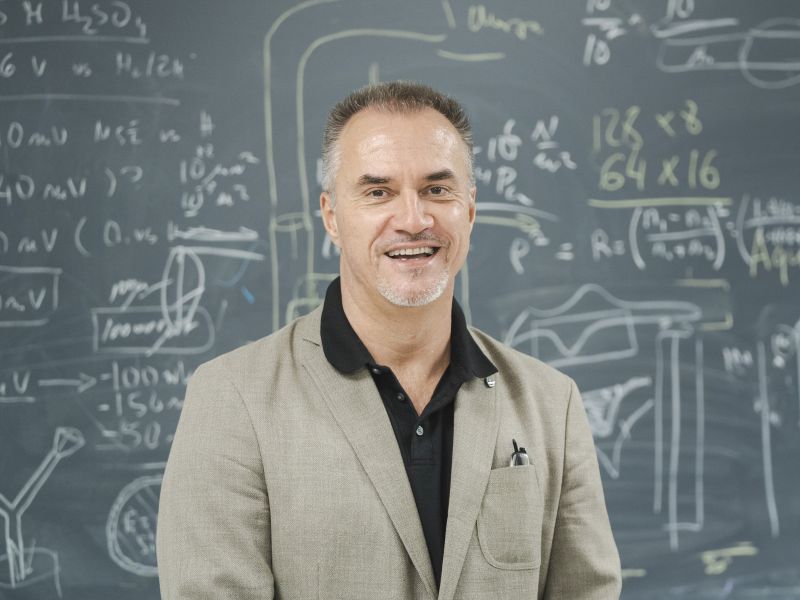Stanko R. Brankovic, Professor of Electrical and Computer Engineering at the Cullen College of Engineering, has received a $300,000 grant to continue his research into creating a new magnetic alloys with superior properties for induction application.
This work is of essential importance for future microchip design, which is expected to consist of up to a trillion resistors by 2030. For this reason, an optimum power supply to the chip structure will be a key problem to solve. Design of new magnetic alloys providing a highly efficient induction process of the on-chip thin film inductors is essential. The future voltage regulators and inductor structures are expected to perform without significant losses in the > 0. 5 GHz frequency range.
The grant comes from the Semiconductor Research Corporation, which previously funded research by Brankovic. In 2019, Brankovic received a three-year, $240,000 grant to explore synthesizing magnetic materials using an electrochemical process. Francisco C. Robles Hernández, now a Professor of Mechanical Engineering Technology at UH's College of Technology, served as co-PI for that grant.
In his latest research proposal, “Electrodeposition of High Moment-High Resistivity CoFeX (X=P, O) Alloys for Inductor Application,” Brankovich notes that he is building on the earlier project.
“[We've] demonstrated theoretical foundation and practical approach for electrochemical synthesis of FeCo ferromagnetic films incorporating resistive Fe2O3 phase,” he wrote. “Facile control over magnetic moment, coercivity, oxygen content and resistance of these materials were established as a function of solution and electrodeposition process design. Using this approach, recent PI’s work demonstrates a high resistivity of CoNiFeX (X=P and/or O) films with soft magnetic properties and high moment (1.8 – 2 T). Extending this work to a CoFe alloys in the composition range of 50:50 at percentage will ensure their moment above 2 T and soft magnetic properties (Hc < 10 Oe) while further improving their resistivity (> 1000 mWcm) by incorporation of P and O as electron scattering impurities.”
Brankovic outlaid a three-year plan for the current research grant.
“In the first year, solution composition and process design for electrodeposition of highly resistive CoFeX films will be demonstrated. Process will be optimized to deliver good magnetic properties and high moment. In addition, electrochemical lamination/deposition process will be developed producing high resistivity laminated structures. This will be achieved by potential modulation between the potentials at which CoFeX alloy deposits and potentials at which only hydrogen evolution and (PO3)3- reduction occur.”
“In the second year, the goal is to fabricate prototype inductor device structures incorporating the CoFeX alloys and CoFeX/X laminated thin films to test their high frequency performance. This goal will be achieved in tight collaboration with industrial liaisons from Intel which will have direct input into the device design and testing.”
“In the third year, we will focus on device testing and further optimization of the CoFeX alloy CoFeX/X laminates performance and synthesis process. We will correlate the alloys and laminates properties with their metallurgical structure, thus providing the link between high frequency performance and their metallurgical structure and synthesis conditions.”
